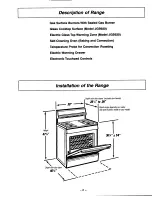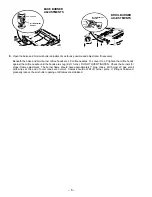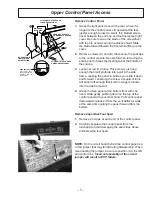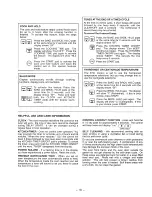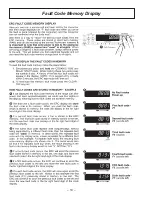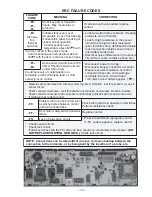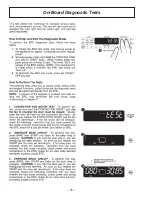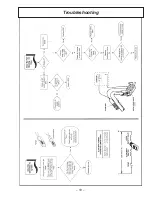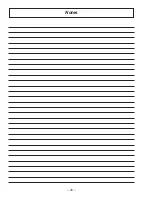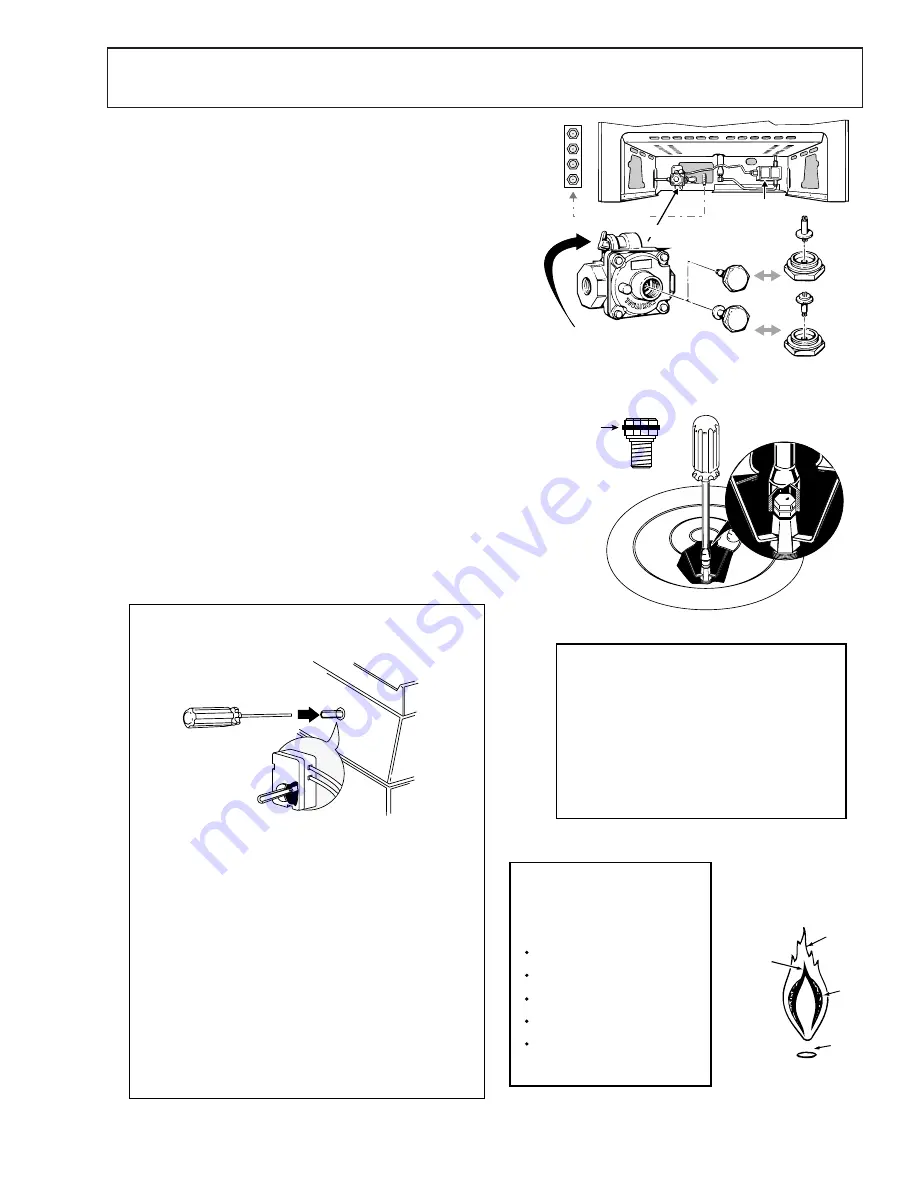
– 5 –
Gas Valve
(Safety Valve)
LP Orifice Spuds
Natural
LP
Pressure Regulator
SHUT OFF LEVER
Oven Only
Lever shown "CLOSED"
Pull lever to "OPEN"
Convert Regulator - Regulator is located in the lower, left
hand rear corner of the range as viewed from the front.
Depending on the model, remove the storage drawer,
broiler drawer or false panel to access the regulator. Some
models with a broiler drawer will have a metal cover over
the regulator that must be removed for conversion and
reinstalled when conversion is complete.
To Convert - Remove the large hex-nut which is located in
the center of the regulator. Remove the plastic pin from
the bottom side of the cap, turn the pin 180 degrees and
snap the pin back into the cap. There are raised letters on
the flat side of the plastic pin, "NAT" and "L.P.". In the "LP"
position the end of the pin marked "NAT" should be
snapped into the bottom of the hex-nut.
Remove surfaced burners and replace all 4 top burner
orifices spuds with the L.P. orifice spuds supplied with the
range (refer to the Technical Data Sheet supplied with the
product for proper L.P. spud location and orifice color
identification).
Using a 1/2" wrench, tighten the orifice hood(s) supplying
gas to the oven burner(s) clockwise until snug.
Open the air shutter on the oven burner(s) to the full open
position and adjust as needed.
Adjust the low flame (simmer) setting on the surface
burners.
2
3
4
5
1
The top burner valves have low flame/simmer
adjustment screws in the center of the control shafts. A
flashlight may be required to locate the screw. A small
thin blade screwdriver (approx. 3/32" blade width) is
needed to engage the screw.
TO ADJUST THE LOW FLAME SETTING - at least two
other burners must be lit. Light the burner being adjusted
and turn the knob to "LOW". Remove the knob and
insert the screwdriver into the shaft of the control valve.
Turn the adjustment screw to obtain the desired flame
size.
TEST FLAME STABILITY - by quickly turning the knob
from "HI" to "LOW". If the flame goes out, increase the
flame size and test again. Also, test flame stability by
quickly opening and closing the oven door. If the flame
is extinguished by the air current created by the door
movement, increase the flame size.
LOW FLAME (SIMMER) ADJUSTMENTS
The top burner orifices can be removed by
removing the burner cap and burner heads.
Using a 7 millimeter (mm) or a 9/32" nut-driver
carefully slide the driver down over the orifice
and rotate counterclockwise to remove.
IMPORTANT NOTE: The orifices have a spring
loaded retaining ring around the hex head to
hold the orifice in the nut driver during
installation and removal. A slight amount of
force is required to push the nut driver down
over the ring.
Retaining
Ring
Yellow Tip
& Soot
Outer
Cone
Flame Lifts
Off Burner
Inner Cone
Pushed Through
Outer Cone
IMPROPER FLAME
Yellow Tips, Soot and/or
Flame Lifting off Burner
TOP BURNER FLAME ADJUSTMENTS
The top burners do not have air shutters
adjustments and use non-adjustable
orifices. If the flame lifts off of the
burner, or if you experience "Yellow Tip"
flames and/or soot in the flames, be sure
to check the following:
Gas pressure: 4" W.C.P. (natural) and
10" W.C.P. (L.P.)
Inspect orifice to be sure it is drilled in
the center and free of debris or burrs.
Be sure the correct size orifice is in
the proper location
Make sure the range was properly
converted if on L.P.
If the cause of sooting can not be
found in the above checks, replace
the orifice with one having a smaller
diameter opening
Conversion to L.P. (Propane) Gas
5.
4.
3.
2.
1.
Summary of Contents for Appliances Profile JGB920
Page 4: ......
Page 5: ......
Page 14: ... 12 Special Features ...
Page 15: ... 13 ...
Page 16: ... 14 Fault Code Memory Display ...
Page 18: ... 16 On Board Diagnostic Tests 1 3 2 ...
Page 19: ... 17 7 4 5 6 ...
Page 20: ... 18 8 ...
Page 21: ... 19 Troubleshooting ...
Page 22: ... 20 Notes ...
Page 26: ......
Page 28: ... 26 Notes ...




